In this article, I am going to tell the story how I was revisiting Bremen ports. As I stated in my first piece about this place, I felt a strong desire to return. This came true faster than I had expected: Even before I had submitted my manuscript, I found myself sitting in a Bremen-bound train. But how to capture the industrial buildings this time? Color or black and white? Expand my first set of images in the same manner – or complement it with a different approach? Kodak Portra and Fuji Acros, both materials occupied my bag in sufficient amounts. I delayed my decision until the very last moment – and finally chose the Acros.
I am going to show you some of the images from this recent trip in July. Altogether, I ended up shooting two rolls of 35mm film in a course of five hours.
On my Way
For this trip, I took a day off from work spontaneously (glad my boss was okay with that). In contrast to the weeks before (and after), the forecast for this day promised lots of clouds and almost no sunshine. My favored conditions: this day would become my day. The forecast quickly proved wrong, and the sun would shine during the lion’s share of the day. Nevertheless, I sat in the nine o’clock train and I wasn’t going to cancel my plans.
It came as it always happens with my photo trips: the longer the journey takes to reach the site, the more intense grows my excitement. I shared the coach with a group of drinking boys (bachelor party?). They horsed around, they yelled and they pushed their boom box to disco levels – but I hardly noticed them.
By the way, please let me note this: it’s definitely not a pleasure to use a train’s bathroom when you have a large camera bag and tripod with you! (And nobody who can watch your belongings.)
Gear Section: Blue Filter for Manipulating the Sky
When revisiting Bremen ports, I used exactly the same gear as in 2017: a Canon EOS 1N with two tilt-and-shift lenses (17 and 24mm). Meanwhile, I had acquired a blue filter for the 24mm lens (type KB 12): I had read that with black and white film, a blue filter should brighten the blue sky and hereby match the luminosity of sky and clouds. Additionally, a blue filter should reduce contrast and lessen the depth of the shadows. This may seem a little bit odd – I got the impression that many black-and-white photographers prefer the exact opposite, namely a red filter that darkens the sky and increases contrast.
Anyway – for me, such a blue filter seemed to be a great option with sunlit architecture. In fact, this Bremen trip was the first application of this filter after it had lain unused in my drawer for over a year. (Many accessories share the same fate as this filter. At a certain point, I am convinced my photography is in urgent need for a special tool. Once bought, the anticipated use case would not occur – and the piece of accessory falls quickly into oblivion.)
Side-by-Side Comparisons: Do You See the Difference?
I ran some experiments with the blue filter. On several occasions, I took to two otherwise equal images of the same building, but one with and the other one without the filter. The effect proved to be rather subtle. In fact, I faced some troubles in distinguishing the two photographs of a given pair afterwards. I acknowledge the importance of making notes, especially when trying something new. However, if I am in the middle of something and have to deal with a rather demanding procedure, I often skip the note making. In general, I rely on my gut feeling (aka. “hoping for the best”) and memory.
Well, normally I am not a big fan of side-by-side comparisons when it comes to showcase my own work. As the smart Simon King recently said: “If you have two similar images and choose to share both it can reduce the impact of either”. I think one should make up with oneself the image that is the one to be preferred. Hence, I am only showing you one exemplary comparison in the course of this article.
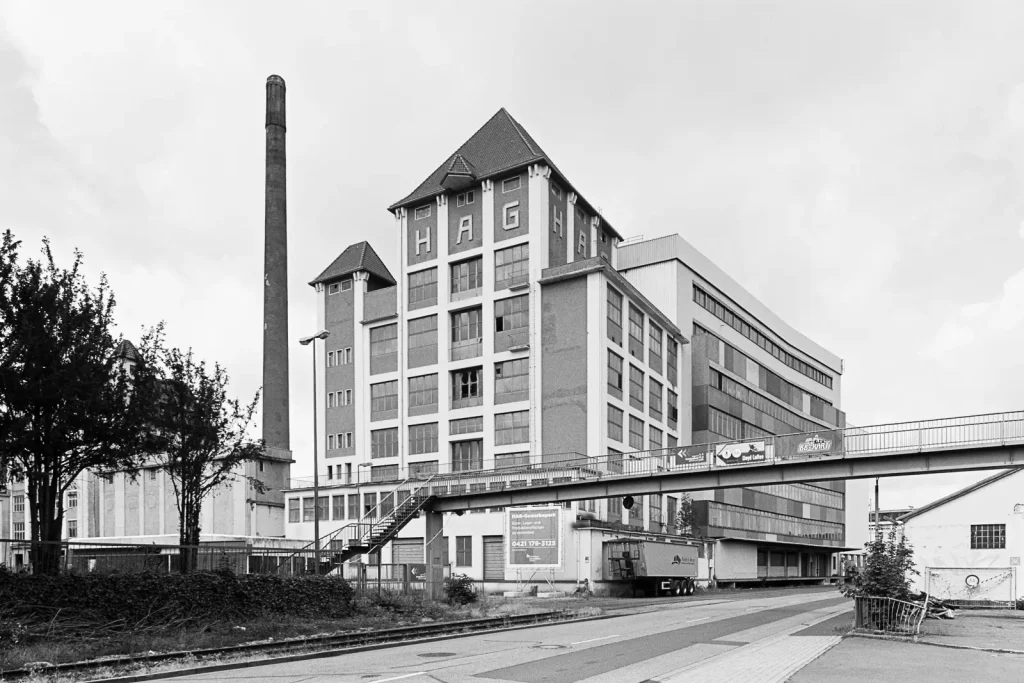
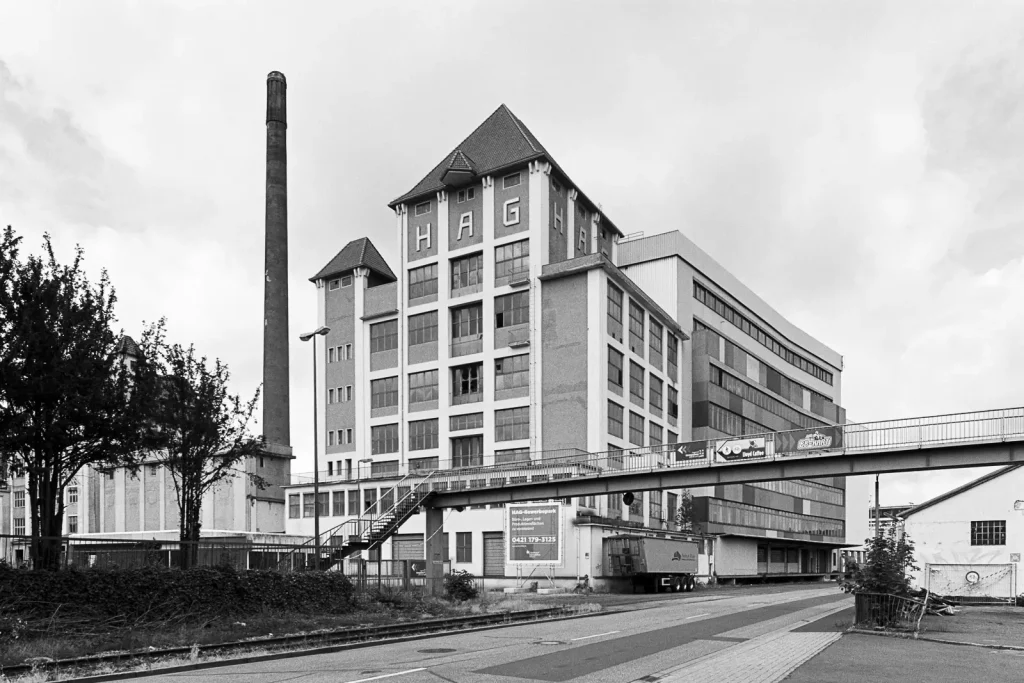

“The Behemoth”
As kind of a cliffhanger, I mentioned the “Getreideverkehrsanlage” in the end of my first Bremen article – that’s a large grain storage and loading facility. During my trip in 2017, I saw the massive building only from a distance. This time, I hiked up all the way to the entrance of the harbor basin to pay this thing a visit. The operator company calls it humbly “the behemoth” (or in German: “Der Koloss”). It is roughly 200m long and 40m tall. According to the leader of the monuments protection authority, the facility ranks among the largest brick buildings in Europe.
In my opinion, you get the most impressive sight from the jetty. There is a photograph in Wikipedia taken at this very point: You see the building’s front (small) side in moderately angled view so that the entire length of the warehouse can be realized. A movable grain elevator and a bridging conveyor belt decorate this perspective. Unfortunately, I couldn’t get the money shot – I discovered the jetty spot fenced in and heavily secured. So I was unable to the reproduce the photograph I found in Wikipedia as this image was taken from within the property.
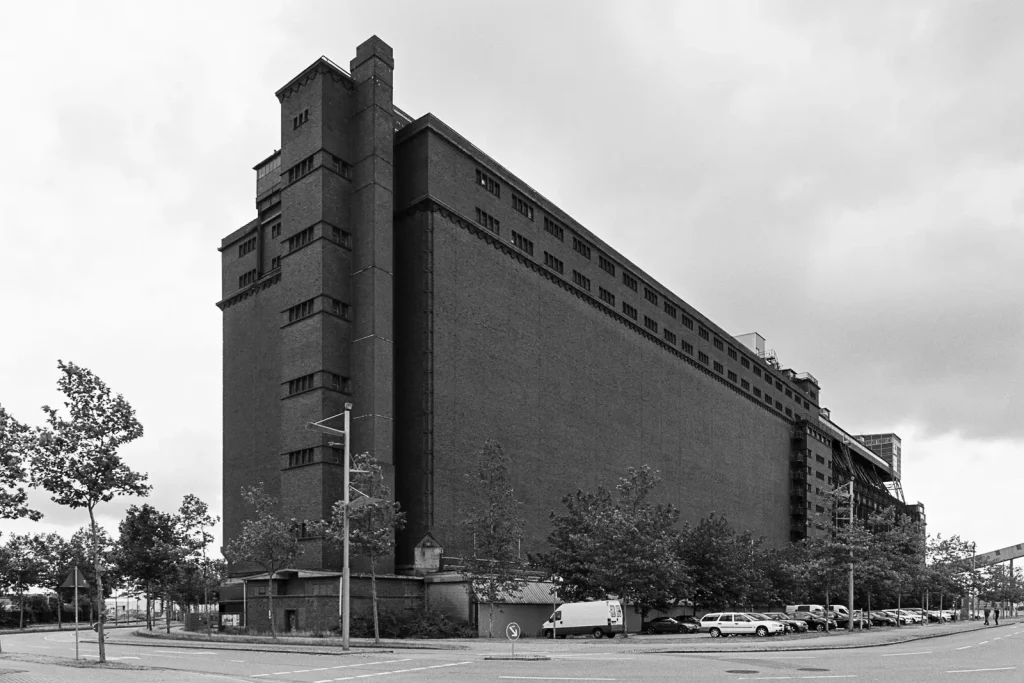

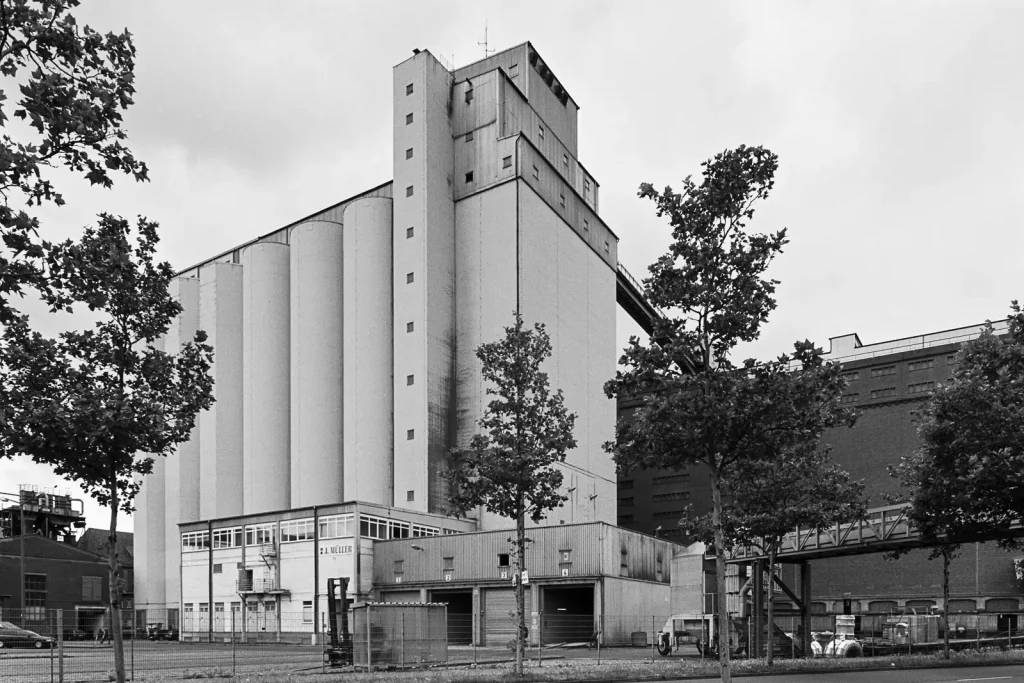
Further Images
I think it’s a good thing to be familiar with a place – but not too familiar. As I was revisiting Bremen ports, I could rely on certain spots that would provide interesting perspectives. Actually, I redid many buildings this time. On the other hand, I didn’t know the place inside out – thus I was able to discover a fair number of new corners (meaning more fun).
Playing the architecture game: It’s always a pleasure to look for an interesting composition that brings off a given building. Or, as Hamish put it into words: the “satisfaction in how the act of photographing something can increase the pleasure in the viewer of said something through the innate satisfaction that good photographic composition imparts”.
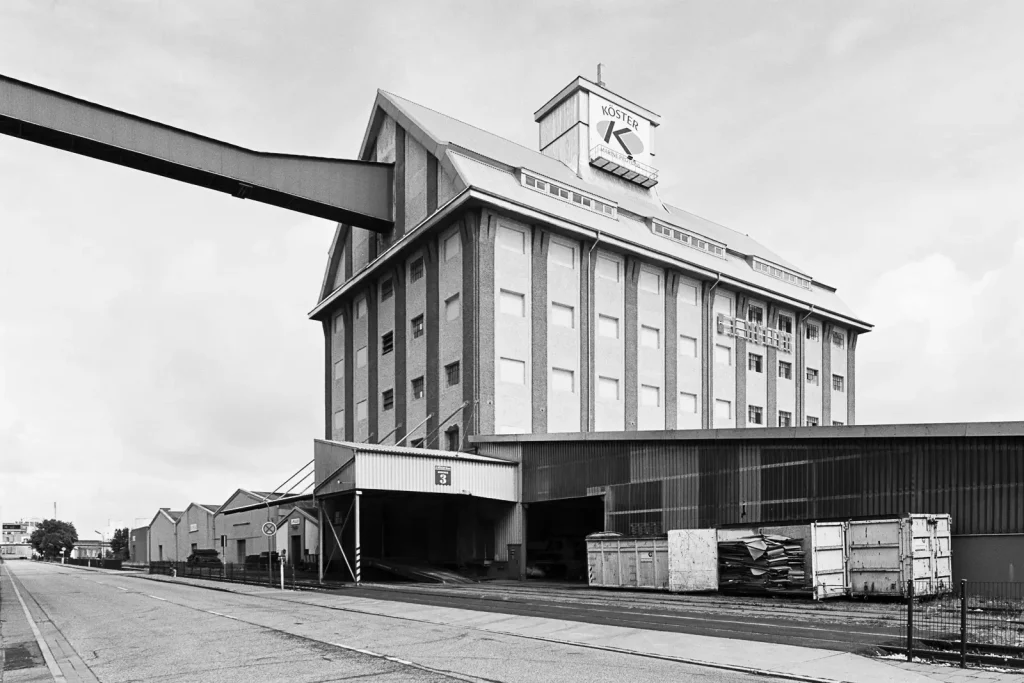
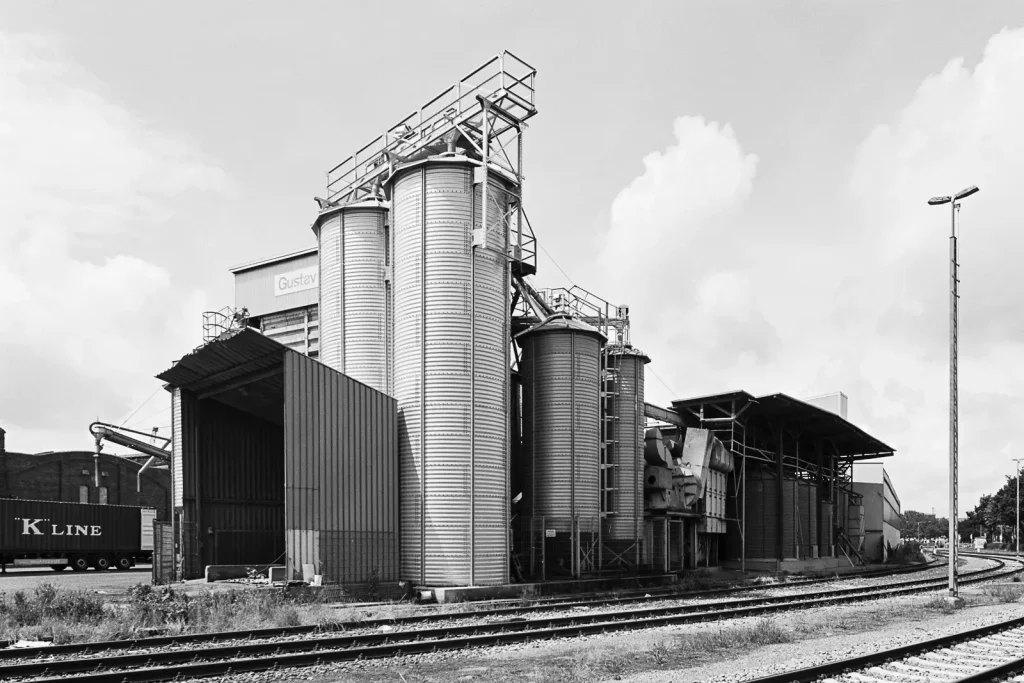
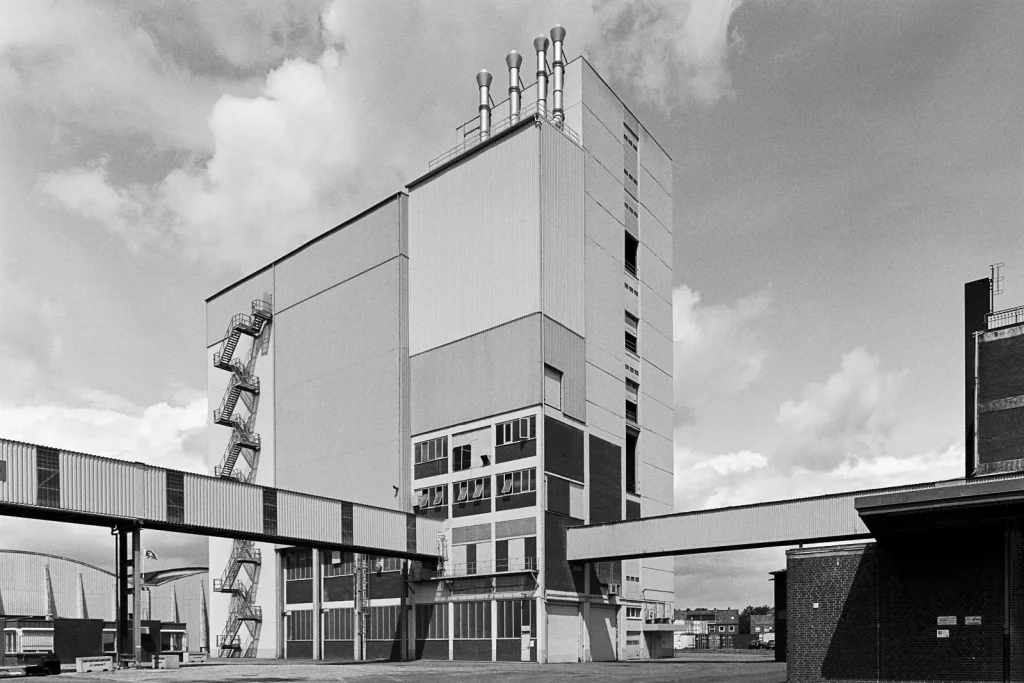
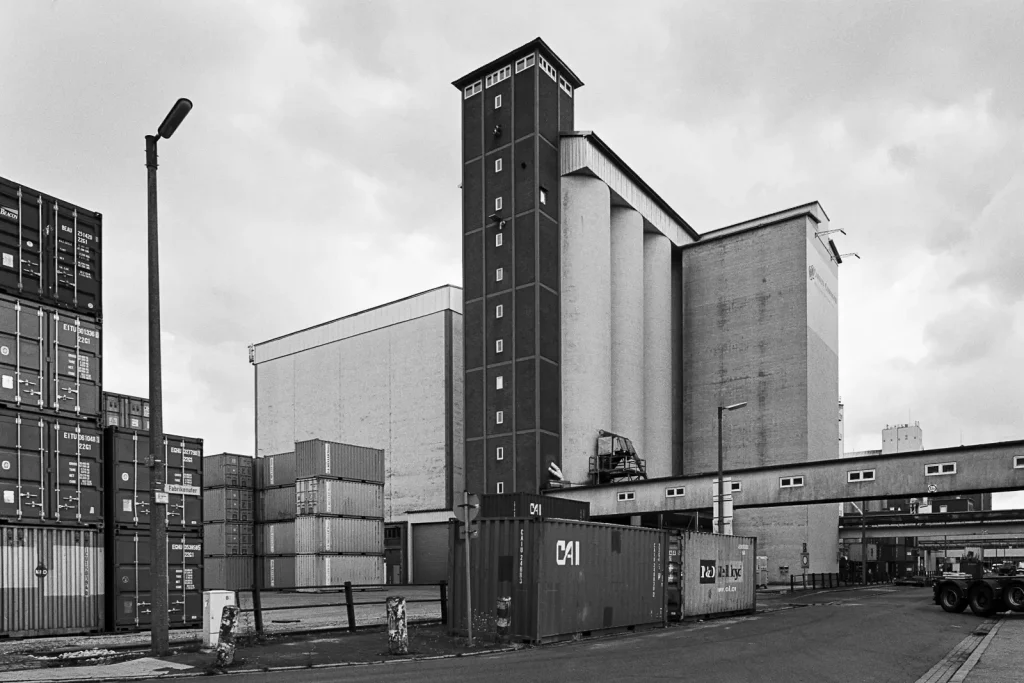
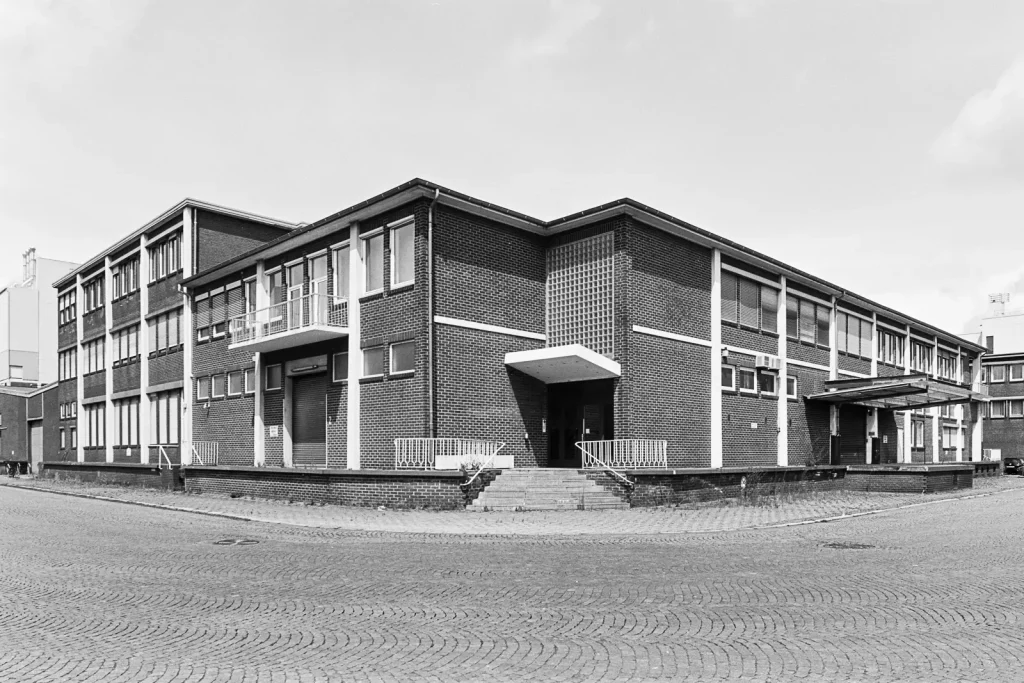
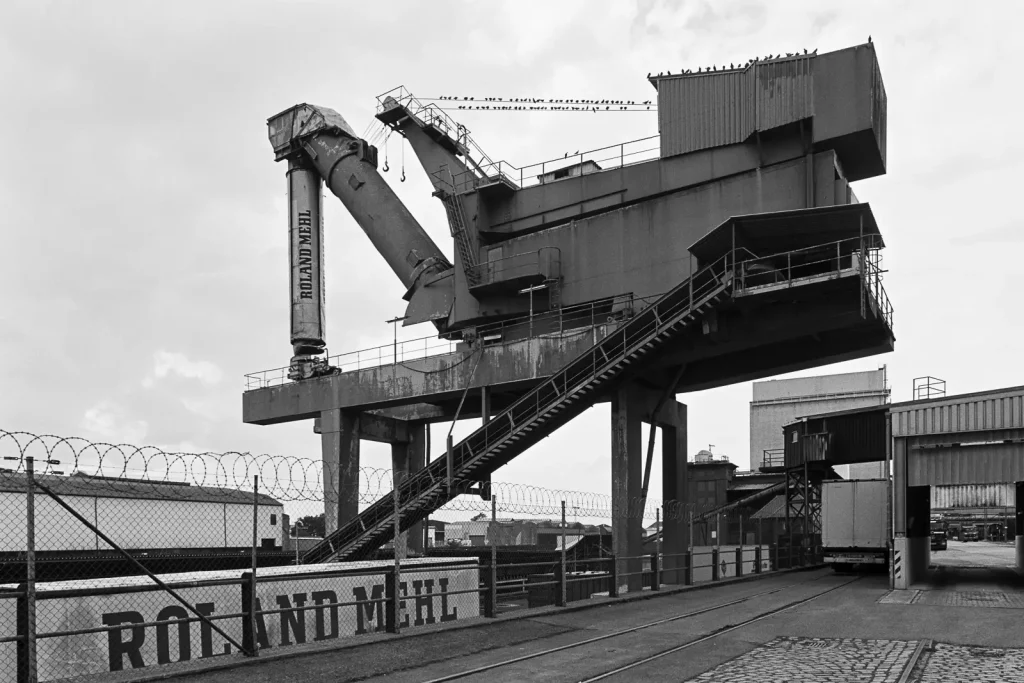
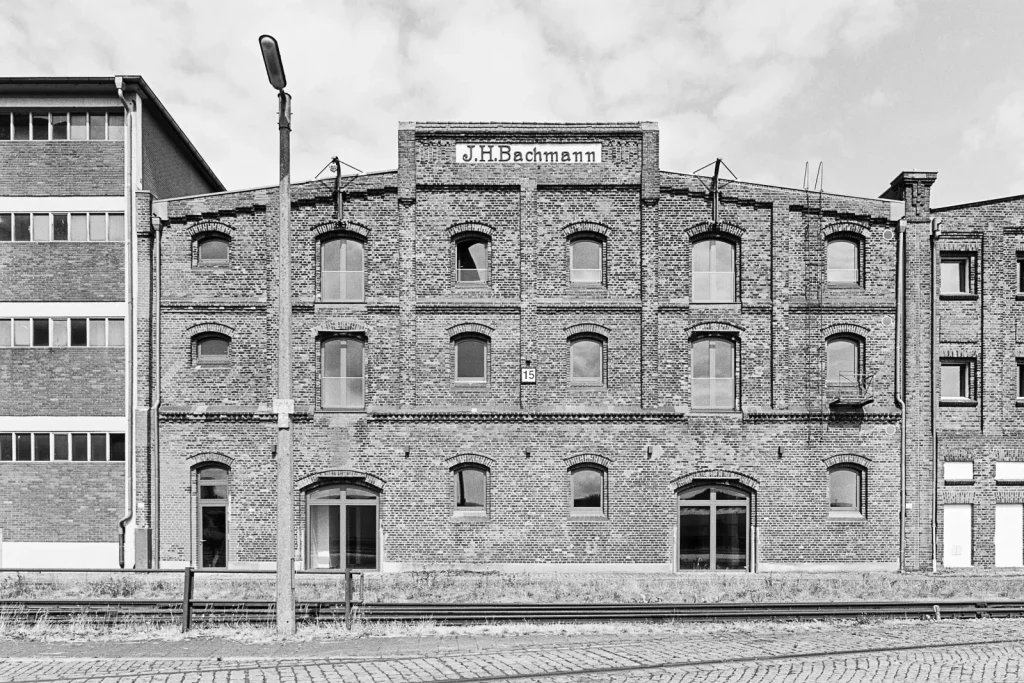
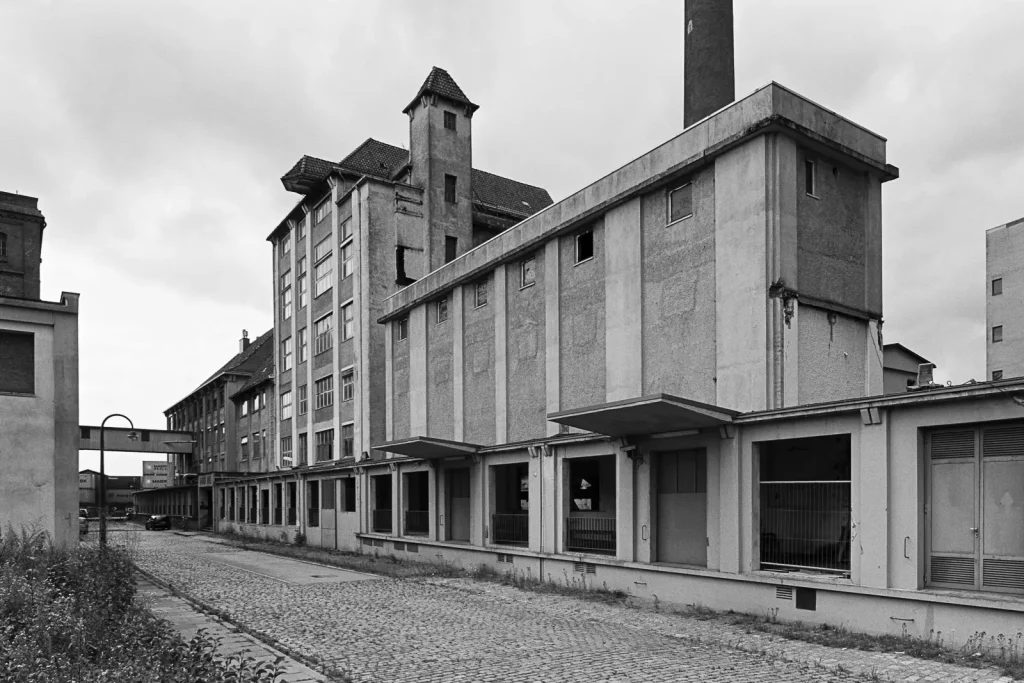
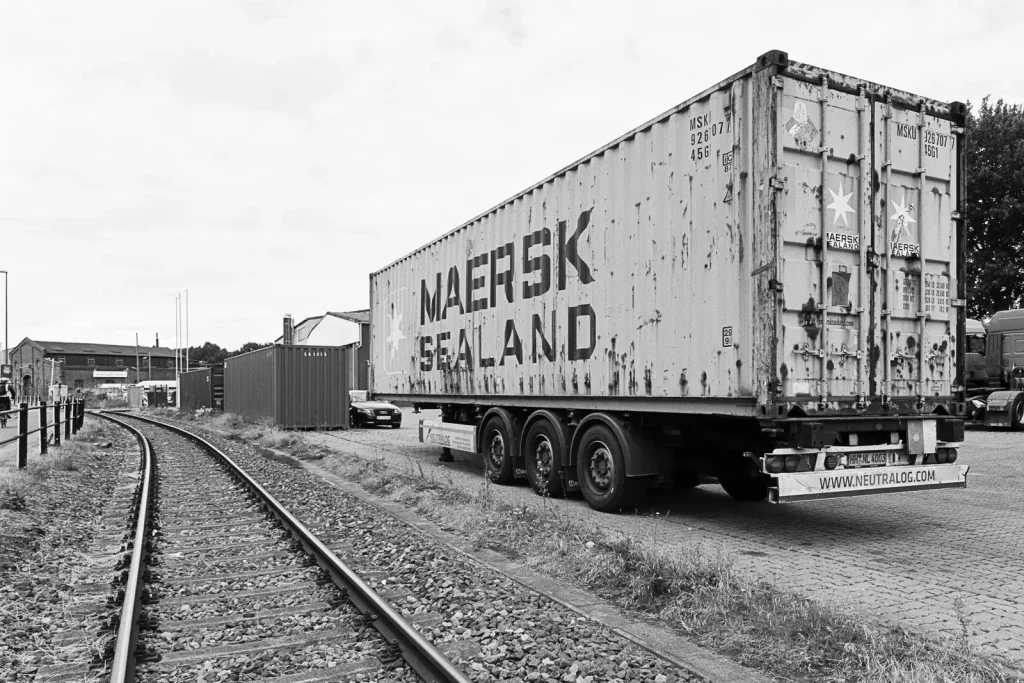
Closing Remarks
Revisiting Bremen ports was a success. Although the weather turned out different as expected (and preferred), I am happy with the outcome. I had a black-and-white series of this site in mind and I eventually got it. It’s a good thing if you are able to return to a place as long as you have the feeling you are not done yet.
These warehouses and grain elevators at the Bremen ports represent the old economy, they are like dinosaurs. I can imagine that in twenty or maybe thirty years these buildings will be gone – gone or transferred into “creativity fostering coworking spaces” with lots of coffeehouses. That is the way of the world and I won’t bring it to a halt. But at least I got my pictures.
Thanks for reading!
Share this post:
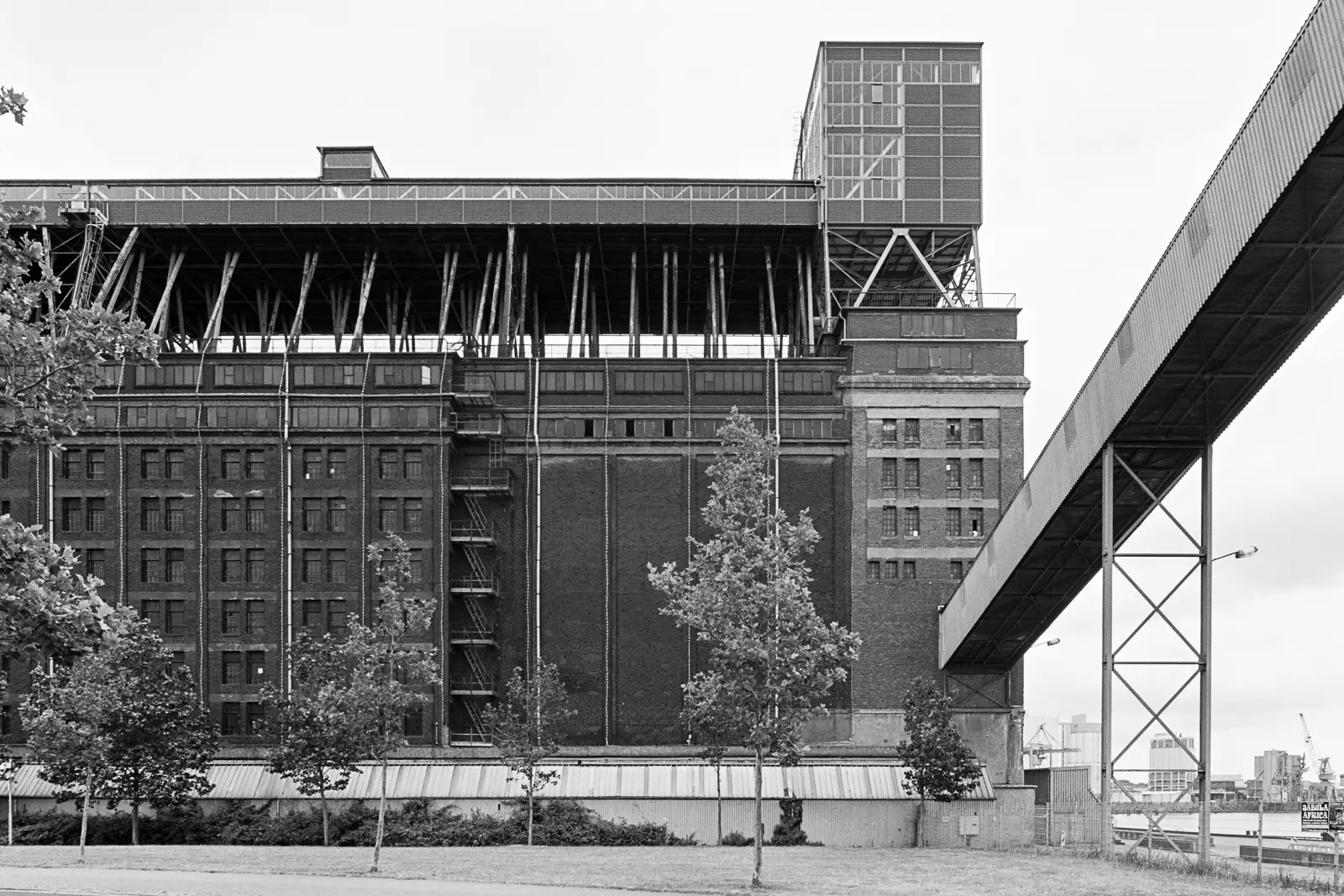








Comments
Trevor Nicholson Christie on Revisiting Bremen Ports – by Christian Schroeder
Comment posted: 26/09/2019
Comment posted: 26/09/2019
Leo Tam on Revisiting Bremen Ports – by Christian Schroeder
Comment posted: 26/09/2019
Comment posted: 26/09/2019
David Hill on Revisiting Bremen Ports – by Christian Schroeder
Comment posted: 26/09/2019
The reason there isn't a *lot* of effect is because panchromatic film is already relatively insensitive to blue. We commonly use yellow and orange filters to bring the blues up to a 'normal' density, and a red filter to darken blues and strongly enhance clouds in the sky. But I'd guess you know that, eh?
The photos are great. Lovely dynamic range and contrast. Perfect use-case for your PC lenses.
Comment posted: 26/09/2019
Peter on Revisiting Bremen Ports – by Christian Schroeder
Comment posted: 26/09/2019
Comment posted: 26/09/2019
Gustavo Quintela on Revisiting Bremen Ports – by Christian Schroeder
Comment posted: 27/09/2019
I often get a lot of fun close to the ÖVB-Arena. But I will definitely try those spots.
Thank you Christian.
And, btw, your pictures are great!
Comment posted: 27/09/2019
Eric Manten on Revisiting Bremen Ports – by Christian Schroeder
Comment posted: 29/09/2019
excellent images that underwrite the importance of conserving our industrial heritage.
Although you call it "not the money shot", I really like the image with the two elevator bridges of the Behemoth.
Comment posted: 29/09/2019
Jens on Revisiting Bremen Ports – by Christian Schroeder
Comment posted: 30/09/2019
As always, Christian, great images. Inspiring!